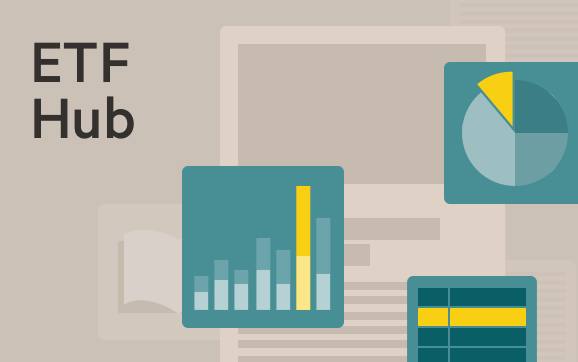[ad_1]
Latest news on ETFs
Visit our ETF Hub to find out more and to explore our in-depth data and comparison tools
Exchange traded funds accounted for a record 30.7 per cent of US stock market turnover last year, a jump of more than a fifth from their 25.3 per cent share in 2021, raising questions about their seemingly unstoppable rise.
The data, revealed in the latest report from the Investment Company Institute, a US trade body, reignites concerns about their influence on the broader market and underlines their increasing use as shorter-term trading instruments for participants looking to rapidly change market exposure, analysts say.
Shelly Antoniewicz, senior director of industry and financial analysis at the ICI, attributed ETFs’ higher share of turnover last year to “elevated market volatility”.
“During periods of market turbulence, ETF secondary market trading [of ETF shares] volumes rise — both in absolute terms and as a share of total stock market trading — as investors, especially institutional investors, turn to ETFs to quickly and efficiently transfer and hedge risks,” she said.
While agreeing that high market volatility will have driven ETF volumes, Rabih Moussawi, associate professor of finance at Villanova School of Business, said the jump in ETF trading could also be due to the introduction of daily option expirations on the S&P 500 index last year.
This led to a “skyrocketing” of zero-day-to-expiration options volumes and the likelihood of a “ramping up” of ETF trading by options market makers, who typically use ETFs to hedge their options positions.
“Given that ETFs are shown to increase the volatility of underlying stocks, this could suggest an increasing effect of ETFs on market volatility due to 0DTE options trading,” Moussawi added.
Valentin Haddad, co-author of a 2022 academic paper that argues the rise of passive investing is distorting price signals and pushing up the volatility of the US stock market, also thought the upsurge in ETF usage was evidence of the departure from their use simply as long-term portfolio building blocks. Instead, he believed investors were increasingly trading on macroeconomic news in the current environment — something “ETFs are particularly well suited for”.
“If anything, it just confirms that the view that ETFs are simply an instrument for passive trading is not accurate; market participants use them very dynamically,” he added.
In dollar terms, US ETF trading volumes surged 22.5 per cent year on year to a record $44.1tn, the ICI data shows.
The jump in ETFs’ share of turnover comes after several years in which this measure has plateaued at 25-27 per cent. This steady proportion held despite dramatic market growth, with the assets of US-listed ETFs surging from $992bn in 2010 to $7.2tn at the end of 2021, according to the ICI, before slipping to $6.5tn at the end of last year as markets fell.
Investors poured a net $609bn into US-listed ETFs last year, even as the market tanked and a record $1.1tn was pulled from US-domiciled mutual funds.
The ICI data shows that ETF trading volume peaked at 39 per cent of stock market turnover on June 13 last year, one day before a keenly awaited Federal Reserve rate-setting meeting.
ETFs appear to be increasing in importance even at times of relatively muted volatility, however. Their market share never fell below 21 per cent on any trading day in 2022, another record and much higher than the 14 per cent floor recorded in 2021.
ETFs have also continued to account for about 30 per cent of trading volumes during the first few months of 2023, rather than dropping back to lower levels, Antoniewicz said, although she argued this was because volatility has remained high.
One of the arguments used by proponents of ETFs is that even though ETF share trading has increased in the so-called secondary market, trading of their underlying securities in the primary market, involving creation and redemption of ETF shares, remains minimal.
Secondary market activity accounted for 86 per cent of ETF trading last year while the primary market accounted for the remaining 14 per cent.
Last year primary market trading in domestic US equity ETFs came to $5.2tn, 5.2 per cent of the $99.8tn traded in stocks during the year, up from 4.6 per cent in 2021.
The ICI argued that this low percentage meant trading of domestic equity ETFs had “minimal impact” on the underlying equities.
Concerns over the growing proportion of trading accounted for by ETFs centre on the fact that the vast majority are passive, index-tracking funds — at the end of the first quarter this year, 94 per cent of US ETFs were passively managed.
Latest news on ETFs

Visit the ETF Hub to find out more and to explore our in-depth data and comparison tools helping you to understand everything from performance to ESG ratings
But Antoniewicz downplayed any concerns on the grounds that passive investing is not homogenous. She said there was “a wide range of different securities, asset classes and tactical investment positions”, adding index choice was an “active decision”.
Bryan Armour, director of passive strategies research, North America at Morningstar, was also relaxed about ETFs’ rising prominence.
“ETF trading activity ticked up as investors retooled their portfolios amid the rout in stocks and bonds,” he said.
“They are a tool for price discovery and allow investors to quickly change beta exposures, so it makes sense that investors increasingly used ETFs at the conclusion of the decade-plus bull market.”
Armour expected this trend to continue as ETFs grab further market share from mutual funds.
“ETFs and their underlying securities are looked at in tandem by market makers and traders. One cannot survive without the other, so I think it’s nearly impossible for ETFs to take an undue share of volume.”
[ad_2]
Source link

